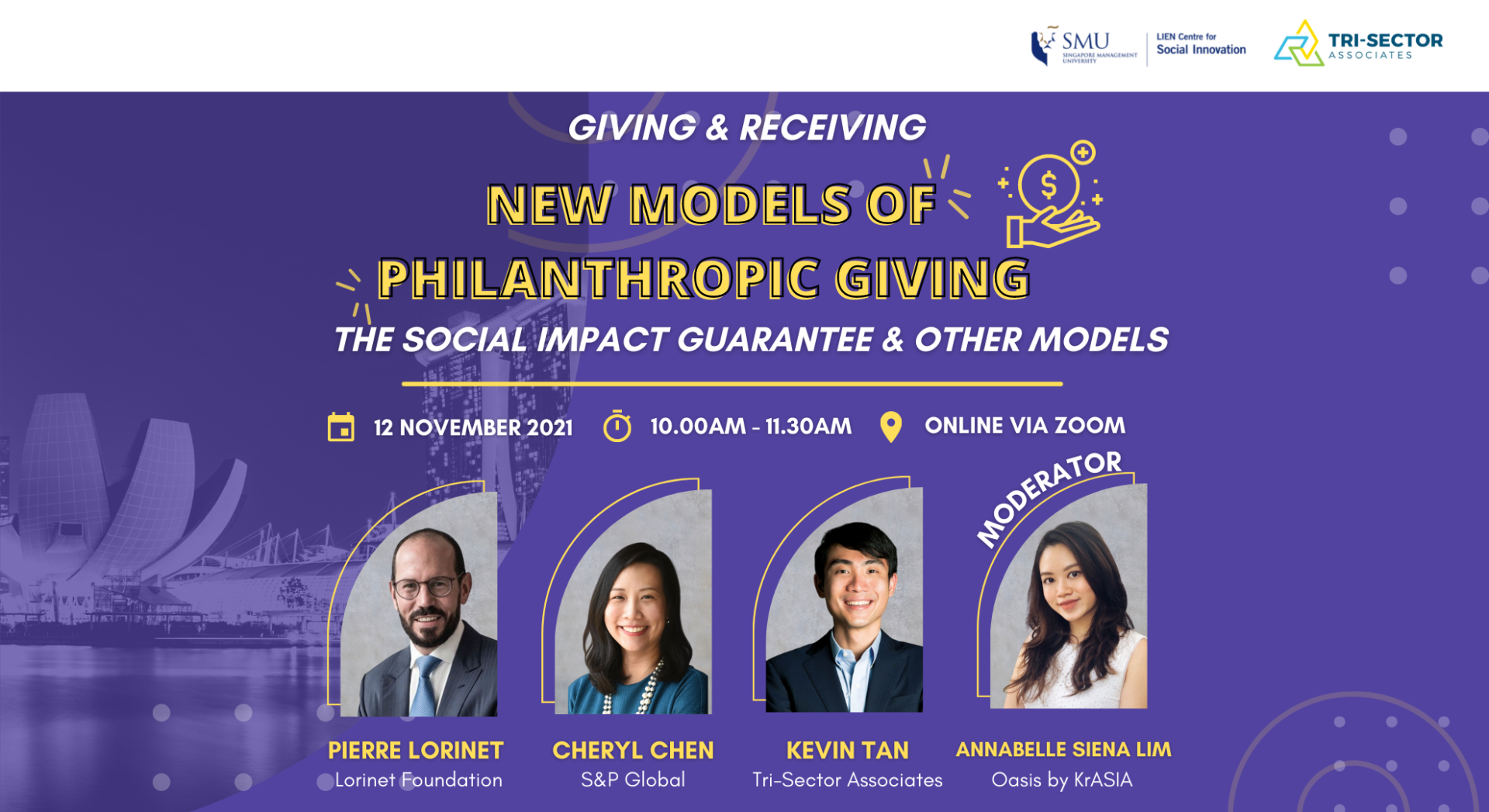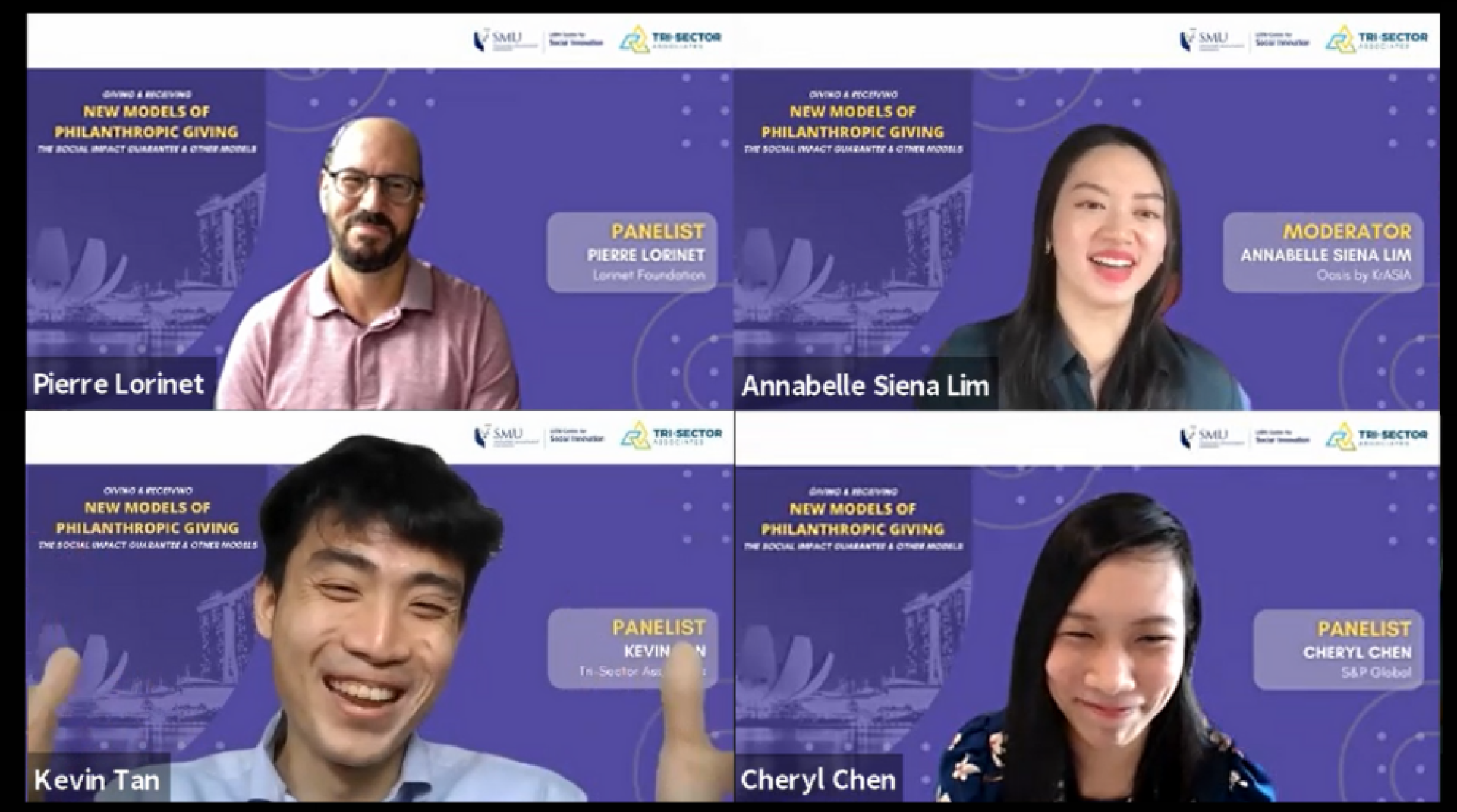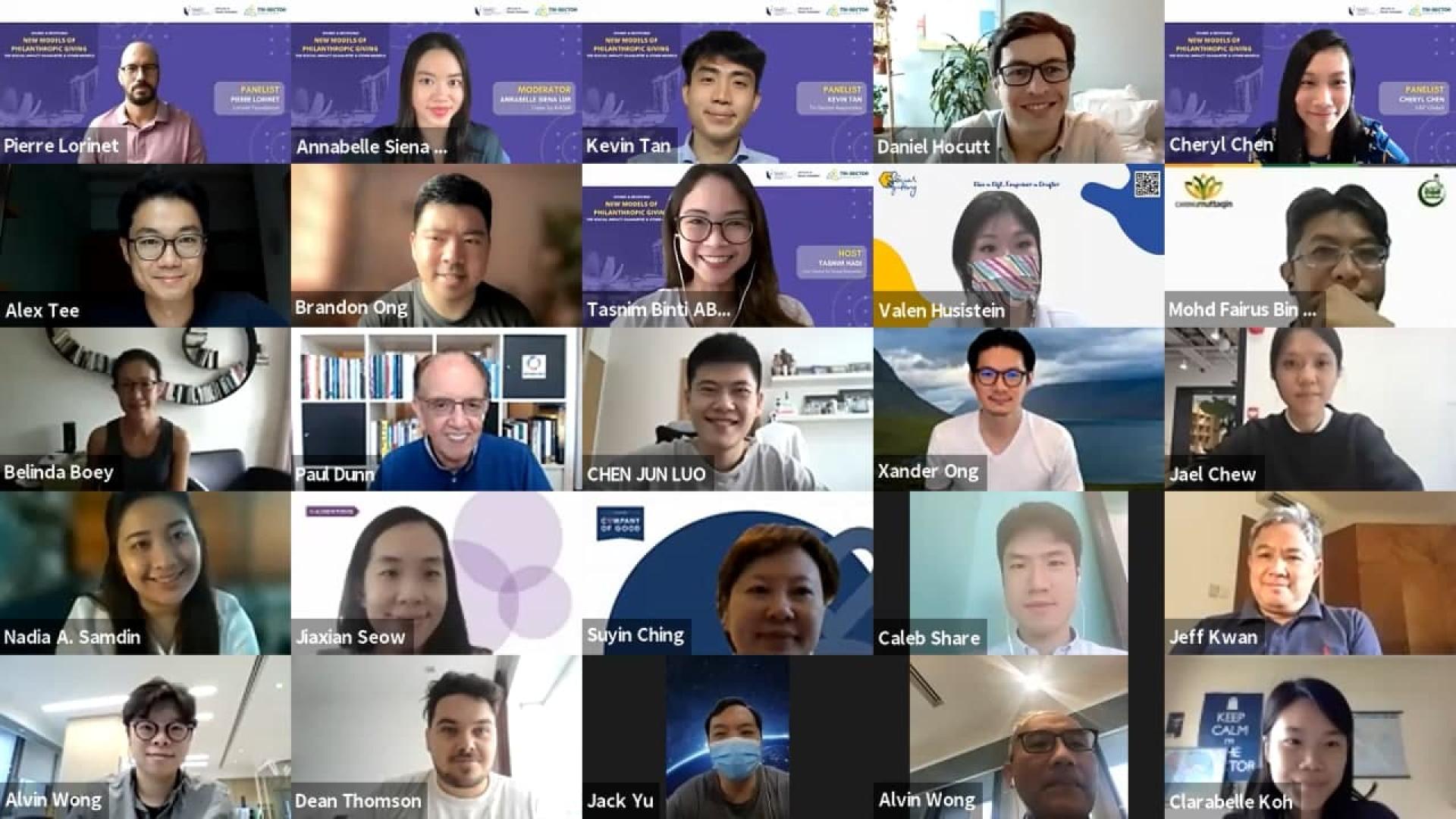On The Future of Philanthropic Giving Models
Thursday Feb 17,2022 | Social Innovation

In 2021, the Lien Centre for Social Innovation (LCSI) organised a series of panel discussions under the Giving and Receiving Programme that aims to expand the findings of our 2020 research report, ‘Giving and receiving: A study of barriers and enablers in Asian philanthropy’. The topics discussed under the programme ranged from different philosophies of giving, to trends and strategies, and more. While the original programme ended after five events, LCSI hosted an encore edition of the Giving and Receiving Programme in November 2021, based on its positive feedback.
Co-hosted by the Tri-Sector Associates (TSA), November’s webinar focused on the different innovative financing methods available in the market for social impact organisations and their programmes. The webinar also launched a case study on a new model of philanthropic giving, titled ‘Every Dollar for Impact: How a Social Impact Guarantee Aligns the Delivery of Social Services in Singapore Around Outcomes’. The case study was co-written by LCSI and the Tri-Sector Associates, and aims to introduce the reader to the benefits of using the Social Impact Guarantee (SIG) as a model of philanthropic giving.
Every Dollar for Impact
The trends in philanthropic giving have been evolving over the years, especially so during the Covid-19 pandemic. Many donors are now embracing new approaches to giving. This has resulted in a shifting definition of what philanthropy and giving is. The newer generation is now more likely to engage in philanthropy beyond just the simple act of donating. The Social Impact Guarantee Model - Pay for Success (PFS) is an innovative financing model that involves three key parties:
- Funders providing upfront funding for a social programme,
- The service provider running the social programme, and
- The outcome funders who provide outcome payments to the funders depending on the programme’s success.
The PFS works in the following ways:
- Social Services Funders provide upfront funding to the Social Service Providers for them to run a service.
- Social Service Providers develop and implement innovation services. They also optimise services with analytical support from TSA, the Guarantor, the Social Service Funder, and other capacity builders as necessary.
- If outcomes are not met, the Guarantor will provide the Social Service Funders with a reimbursement that is contingent on the number of outcomes not met.
 A slide on the SIG model presented during the webinar by TSA founder Kevin Tan
A slide on the SIG model presented during the webinar by TSA founder Kevin Tan
In his introduction, TSA founder Kevin Tan noted that the Social Impact Guarantee is a new collaboration model that maximises the impact where “every dollar [that impact funders provide] really achieves impact” and that “service providers get to try something new and push the boundary.” The model also provides the guarantor with the benefit of maximising the time value of money. Funding dollars do not have to be committed until or unless the social impact guarantee is activated and this is an efficient way to stimulate impact and also stretch the impact dollar to its maximum benefit. Another key thing to note about this model of giving is that, should the SIG fail, many third parties Social Service Funders will usually “recycle” the donations (returned by the outcome funder) back into the programme and fund other programmes - creating a cycle where every impact dollar will be maximised to its fullest potential. Kevin shared that the aim of the SIG is to make it easier for newcomers to join the programme, and also to attract new types of payers or funders—particularly the impact funders, banks, and even insurance industries, to join as guarantor and broaden the opportunities available in the market.
The New Ways of Funding and the Corporate World
The evolving trends of giving also mean a shift in the way the corporate sector involves itself in philanthropic efforts. Gone are the days where cheque donations and volunteer hours alone would be sufficient enough to illustrate a company’s social impact. Companies are now being assessed via various measures, to evaluate whether they are effectively making a difference in areas outside of their regular business. Cheryl Chen, Director of Corporate Responsibility & Sustainability at S&P Global, noted that the strength of the Social Impact Guarantee model lies in its focus on impact assessment and evaluation of the outcome. She mentioned that while there are various other forms of measurement and assessment such as B4SI, LBG Measurement Mode, Social Return On Investment etc, they are still relatively weak and unevenly applied across companies. On the other hand, the SIG and PFS models place the social impact outcome at the centre of the framework, with very strong accountability and incentives as the key differentiating factor from other measurements.
Cheryl also mentioned that the corporate philanthropy space can be quite territorial where one organisation funds for one cause, creating clear lines across different companies. However, what the new model encourages is the philosophy that “the whole is greater than the sum of its parts”. It highlights the importance of collaboration, and plays on the strengths of different stakeholders by building them into the framework of the model; each of the funders, service providers, and guarantor plays a critical role in making the social impact happen.
 Photo of the four speakers during the panel discussion
Photo of the four speakers during the panel discussion
SIG and PFS Models as a blanket solution?
Could the SIG and PFS models be the solution for financing models in the philanthropy sector? Kevin answered that rather than a blanket solution, these models serve as a way to help different sectors do what they do best. The way funding helps to actualise a project is usually through a substituting method—where one party in either the public or private sector is unable to support, the other party comes in as a substitute. The SIG and PFS aim to remove this act of substitution and instead provide a complimentary and collaborative partnership between the private and public sector. These new models provide ways to address such issues that are typically hard to deal with, which creates a higher chance for social impact.
Guarantor’s Motivations
So what motivates a private party to join the model as a guarantor? According to Pierre Lorinet, founder of the Lorinet Foundation, what is most important is the alignment between the private and the public sector in promoting and advocating for the same cause. The private philanthropy circle is very small compared to the government sector. However, it plays a unique role in providing a lot more flexibility for the service providers, and tends to have a higher risk appetite. It benefits the community when private funders assist service providers in piloting solutions that work, and collaborate with the government sector to push it to the next level. Pierre mentioned that this collaborative nature is the only sustainable way to grow impact, and allow for any social change to take effect. The collaborative nature of the SIG and PFS models are what attracted Pierre into participating as a private guarantor.
 Group shot after a successful event
Group shot after a successful event
The Future of Philanthropy
The future of philanthropy is still shifting and getting redefined day by day – transitioning from a single funder-to-service provider funding style, to multiple funders working with multiple service providers. All the panelists agreed that moving forward, the model of philanthropic giving would take shape as a collaborative process. Cheryl highlighted the need for a Quadruple Helix Model (namely government, society, academic/research, and businesses) to be implemented in the social development space where the society can benefit from the social impact generated by both the government and private sector. It is also important for the philanthropic scene to understand the need to have a more concrete impact and need assessment model, rather than emphasising on just the good intentions. Moving forward, we must all be more conscious of where philanthropic contributions are heading, and gear ourselves up for a more intentional and collaborative space.
Visit our Giving and Receiving landing page to see all past reports and events in this programme.